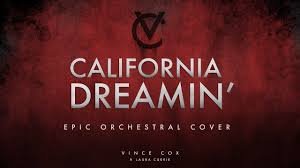
types of drums
Acoustic Drums
Acoustic drums are traditional, non-electronic instruments that create sound through the vibration of membranes or drumheads when struck. These drums are central to various music genres including rock, jazz, blues, metal, and funk. A standard acoustic drum kit typically consists of a snare drum, bass drum (also known as a kick drum), tom-toms, hi-hats, and cymbals. The snare drum is known for its crisp and bright sound, produced by a series of wires (snares) stretched across the bottom head of the drum. It is often used to accent beats and provide rhythmic backbones. The bass drum, operated by a foot pedal, provides the low-end pulse and is crucial for maintaining tempo. Tom-toms come in various sizes and pitches, offering tonal variation and dynamics during drum fills and transitions. The hi-hats consist of two cymbals mounted on a stand with a pedal mechanism, producing a range of “chick,” “splash,” and closed or open sounds depending on how they’re played. Additionally, drummers often include crash, ride, and splash cymbals for accenting and texture
Electronic drums are modern alternatives to acoustic sets, using rubber or mesh pads equipped with triggers that send signals to a sound module. These signals are then translated into a wide variety of percussive sounds, including samples of acoustic drums, synthesized tones, and even orchestral percussion. Electronic drum kits are popular in electronic music, hip-hop, pop, and studio recording environments where volume control, sound variety, and portability are major advantages. Leading manufacturers like Roland, Yamaha, and Alesis offer advanced models with velocity-sensitive pads, Bluetooth connectivity, and customizable kits. Another key advantage is the ability to use headphones for silent practice or connect directly to digital audio workstations (DAWs) for music production. Many electronic drums also include built-in metronomes, play-along tracks, and practice modes to aid skill development.
Hand Drums
Hand drums are among the oldest percussion instruments in human history. These drums are played with the bare hands rather than sticks, offering intimate control over dynamics and tone. Prominent examples include the djembe, congas, bongos, and tabla. The djembe, originating from West Africa, features a goblet-shaped body and is renowned for its bass, tone, and slap sounds. The congas, cylindrical drums from Afro-Cuban traditions, are typically played in sets of two or three and produce deep, warm tones. The bongos, smaller paired drums, are used in Latin, Afro-Cuban, and salsa music for fast-paced, melodic rhythms. Tabla, a fundamental instrument in Indian classical music, consists of two drums tuned to different pitches. It requires intricate finger techniques to articulate its rich tonal language.
Frame Drums
Frame drums are among the most ancient types of percussion and consist of a shallow, circular frame with a drumhead stretched across one side. They are prevalent in Middle Eastern, Indian, Mediterranean, and Celtic music. Instruments such as the bodhrán, tambourine, daf, and riq fall under this category. The bodhrán is an Irish frame drum typically played with a wooden beater called a tipper and is central to folk and traditional Celtic music. The tambourine includes metal jingles (zills) and is used in a variety of music from classical to pop. The daf is common in Persian and Kurdish music, while the riq is an Arabic frame drum with jingles, played with delicate finger taps and rolls.
Marching Drums
Marching drums are designed for mobility and durability, used by military bands, drum corps, and parade ensembles. These include snare drums, bass drums, tenor drums, and cymbals, all carried using harnesses or slings. Marching snare drums are deeper and louder than regular snares to project sound over long distances. Marching bass drums come in multiple sizes and are used to produce powerful rhythmic pulses. Tenor drums, often played in sets of four to six, add melodic contour to drumlines. These drums demand precision, coordination, and physical endurance, making them popular in competitive events like Drum Corps International (DCI).
Taiko Drums
Taiko are traditional Japanese drums used in festivals, rituals, and theatrical performances. They come in various sizes, from the small shime-daiko to the massive odaiko. Played with thick wooden sticks called bachi, taiko performances are highly choreographed and physically demanding. Taiko drums are crafted from hollowed-out logs and covered with animal skin, creating a thunderous, deep sound. These drums are used in kumi-daiko ensembles, combining multiple taiko types for dynamic performances. Taiko has gained global popularity, influencing contemporary and fusion music styles.
Steel Drums
Steel drums, or steel pans, originate from Trinidad and Tobago and are created from oil barrels carefully tuned to produce melodic notes. Unlike traditional drums that emphasize rhythm, steel drums are pitched percussion instruments, capable of playing complex melodies and harmonies. Steel pans are integral to calypso, soca, and Caribbean music, and have found their way into jazz and pop music worldwide. They are played with rubber-tipped mallets and come in various ranges like tenor, double second, and bass pans.
Talking Drums
The talking drum is an hourglass-shaped instrument from West Africa capable of mimicking the tone and prosody of human speech. It has two drumheads connected by leather tension cords, allowing the pitch to be altered by squeezing the drum under the arm. Used for communication and storytelling, the talking drum is deeply embedded in the cultural heritage of countries like Nigeria, Ghana, and Senegal. Drummers often use a curved stick to strike one head while modulating the tension to create “speech-like” patterns.
Cajón
The cajón is a box-shaped percussion instrument originating from Peru. Played by sitting on it and striking the front surface (tapa) with the hands, fingers, or brushes, the cajón produces snare and bass tones. Modern versions often include internal snares or strings for added texture. Cajóns are widely used in flamenco, folk, unplugged acoustic settings, and world music, offering compactness and rhythmic versatility. Its growing popularity has led to innovations such as pickup microphones, pedal-controlled cajóns, and hybrid models with electronic triggers.
Udu Drum
The udu drum is a traditional Nigerian clay pot drum played by hand, producing unique bass and water-drop-like tones. Unlike conventional drums, the udu creates sound by striking its side hole and main body, allowing rich tonal variations. Used in both ceremonial and contemporary music, the udu’s deep resonant qualities make it a favorite among world percussionists and experimental artists.
Hybrid Drums
Hybrid drum kits combine acoustic and electronic components to offer both tactile feel and digital flexibility. For instance, drummers might use an acoustic snare and kick with electronic pads for triggering samples. Hybrid setups are ideal for live performances, studio recording, and sound design, enabling artists to expand their sonic palette without sacrificing playability. Brands like Roland, Yamaha, and Alesis offer integrated systems, while triggers and sampling pads like the Roland SPD-SX are often used to enhance existing kits.
Conclusion
Drums are among the most diverse and versatile instruments in the world, with deep roots in every musical culture. From the raw, expressive power of acoustic drums to the digital innovation of electronic kits, and the cultural richness of hand and frame drums, each type offers unique sonic and rhythmic possibilities. Whether in a symphony, a street parade, a jazz combo, or a solo performance, drums play a central role in shaping rhythm, energy, and emotion. As musical technology and cultural exchange continue to evolve, so too will the art of drumming—uniting people across genres, geographies, and generations.






